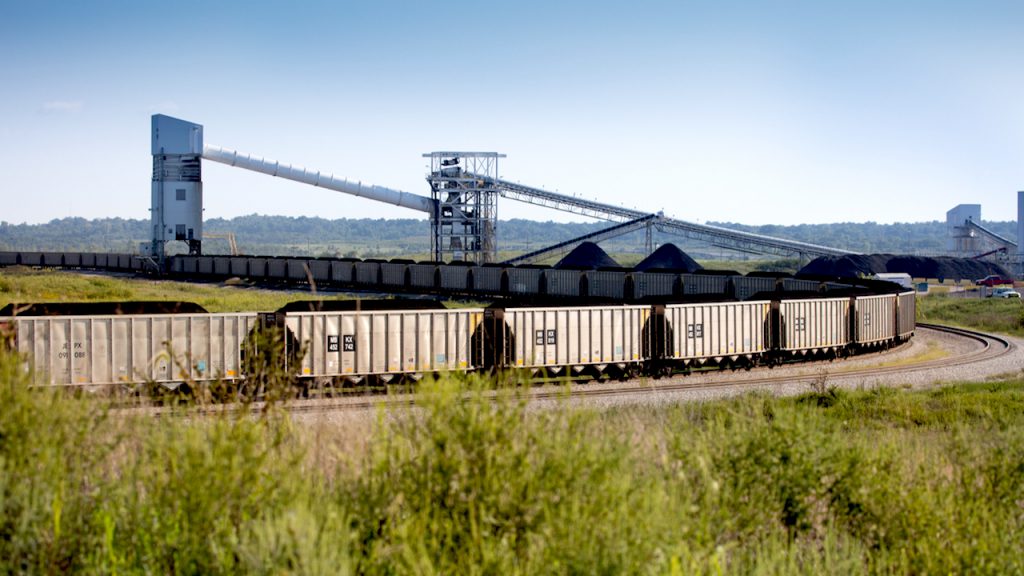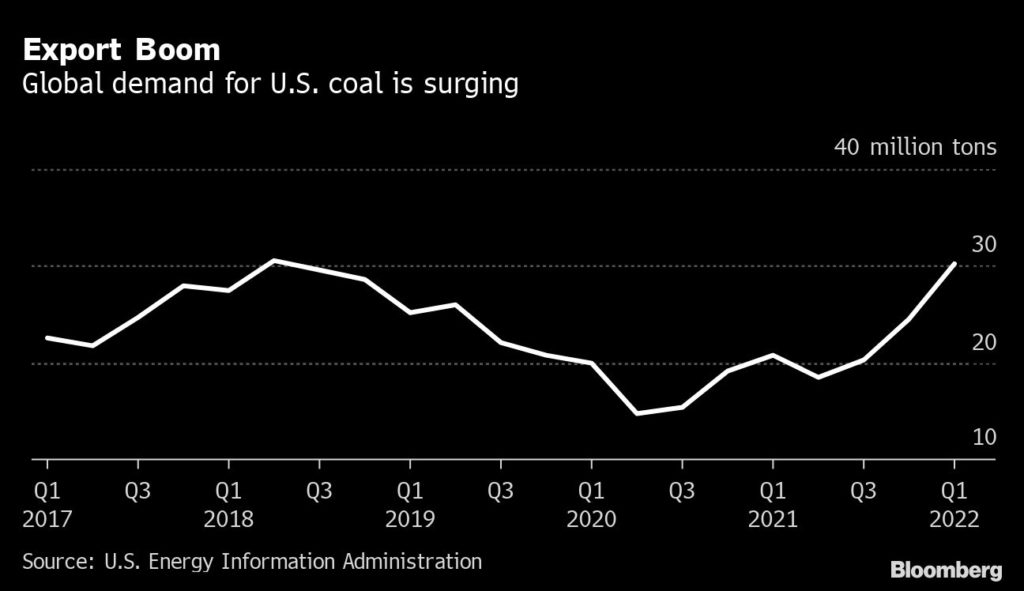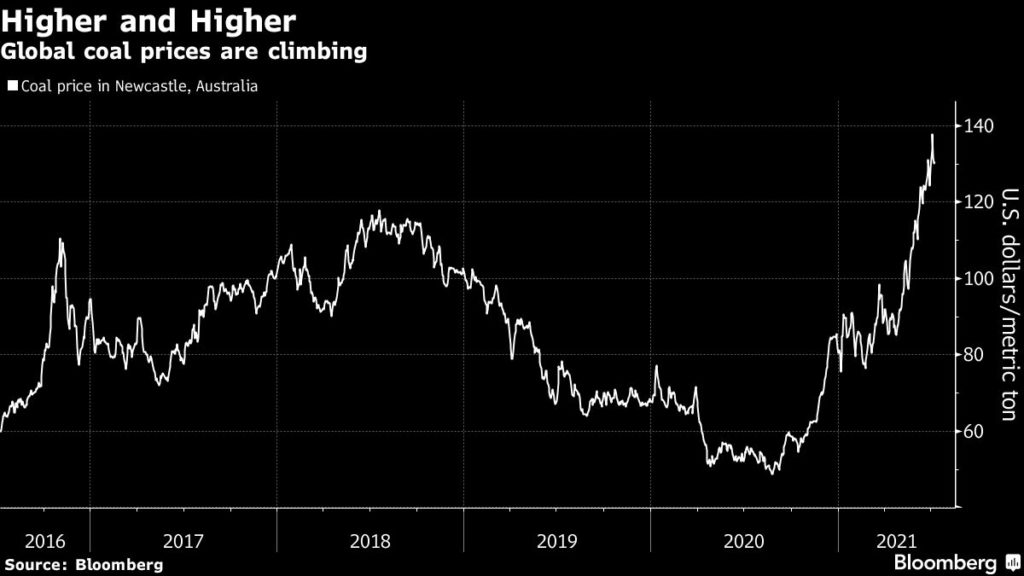
The surging, post-pandemic U.S. economy is driving an unexpected boom in coal, the latest sign that demand for the dirtiest fossil fuel remains resilient.
American coal production this year will swell 15% to meet stronger demand for electricity at home and abroad, according to the U.S. Energy Department’s July outlook. That would be the most since at least 1990 and nearly double the 8% increase projected in May, when the economic rebound was still in earlier stages of recovery.
The shift underscores the vicious circle of climate change as more extreme temperatures drive power demand just as extensive drought cuts output from hydropower dams. That prompts utilities to burn more of the dirtiest fossil fuel, a pattern also exacerbated by high natural gas prices. At the same time, key exporters including Australia and Colombia face supply problems that have helped lift global prices to a 10-year high and added to international demand for U.S. coal exports.

“Everything that could happen that’s positive from the demand standpoint is happening,” said Andrew Cosgrove, a mining analyst with Bloomberg Intelligence. “The stars are aligning.”
That growing appetite will help boost U.S. exports of the fuel by 21% this year, and another 19% in 2022, the Energy Department said Wednesday in its latest short-term outlook report. The department said its projections are based on forecasting firm IHS Markit’s projection that the world’s largest economy will grow by 7.4% in 2021.
The outlook also is driving up mining company share prices. Peabody Energy Corp., the biggest U.S. coal producer, and rival Arch Resources Inc. both hit 18-month highs this week. Consol Energy Inc. is trading near the highest since August 2019.

And the coal boom is unlikely to lose momentum anytime soon. As long as economic growth remains robust, so too will energy demand, according to Lucas Pipes, an analyst at B. Riley Securities.
Even though the fuel faces strong headwinds in the U.S. and Europe, where efforts to curb climate change are prompting utilities to close coal-fired power plants, global consumption is still increasing because of demand in Asia. And because suppliers aren’t opening new mines, prices are likely to remain high.
“I’m not seeing any changes in these trends,” said Pipes. “It bodes well for coal.”
(By Will Wade)
Comments